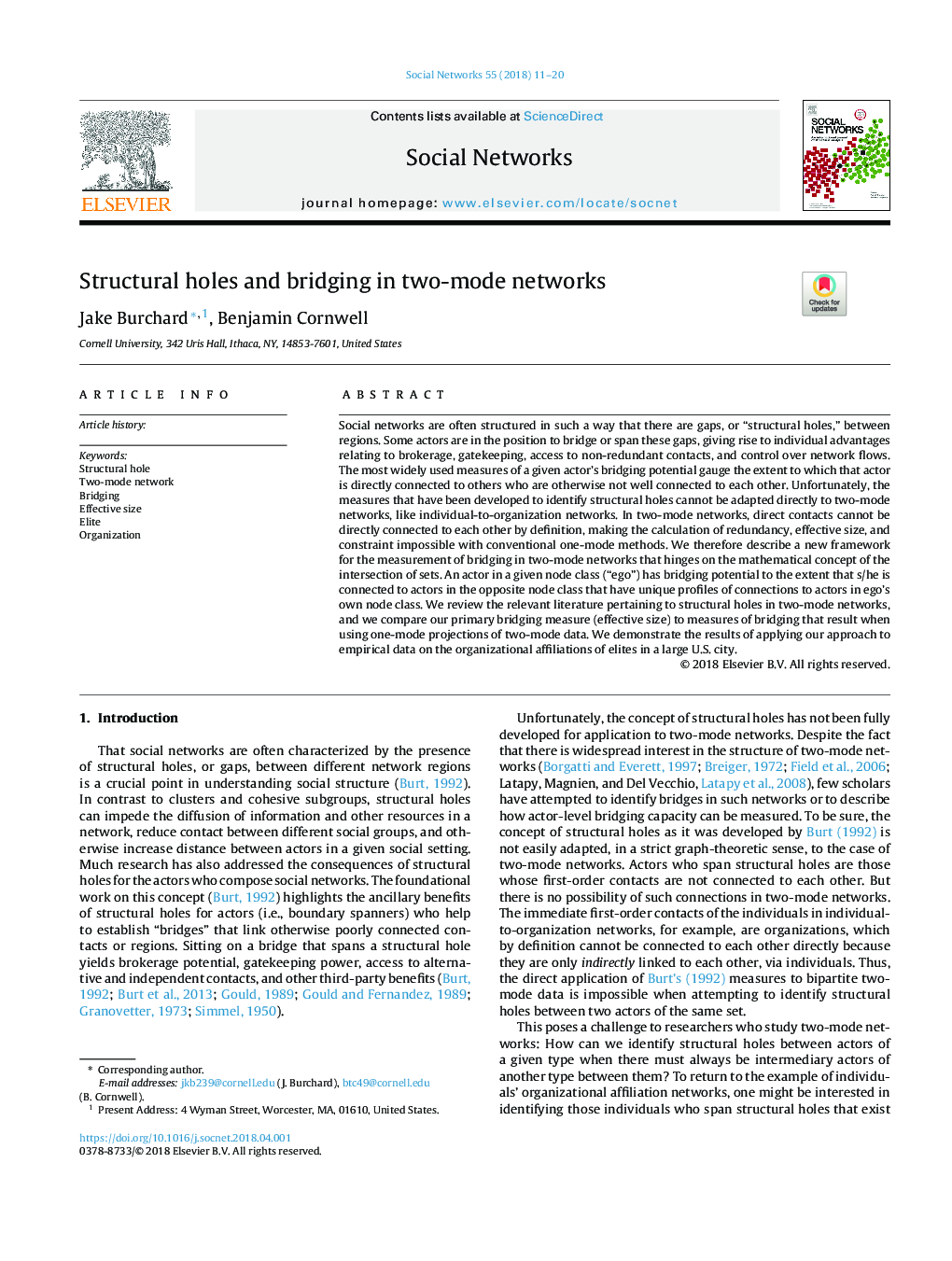| کد مقاله | کد نشریه | سال انتشار | مقاله انگلیسی | نسخه تمام متن |
|---|---|---|---|---|
| 7538174 | 1488844 | 2018 | 10 صفحه PDF | دانلود رایگان |
عنوان انگلیسی مقاله ISI
Structural holes and bridging in two-mode networks
ترجمه فارسی عنوان
حفره های ساختمانی و پل ها در شبکه های دو حالت
دانلود مقاله + سفارش ترجمه
دانلود مقاله ISI انگلیسی
رایگان برای ایرانیان
کلمات کلیدی
سوراخ سازه، شبکه دو حالت، پل ارتباطی، اندازه موثر، نخبه، سازمان،
موضوعات مرتبط
مهندسی و علوم پایه
ریاضیات
آمار و احتمال
چکیده انگلیسی
Social networks are often structured in such a way that there are gaps, or “structural holes,” between regions. Some actors are in the position to bridge or span these gaps, giving rise to individual advantages relating to brokerage, gatekeeping, access to non-redundant contacts, and control over network flows. The most widely used measures of a given actor's bridging potential gauge the extent to which that actor is directly connected to others who are otherwise not well connected to each other. Unfortunately, the measures that have been developed to identify structural holes cannot be adapted directly to two-mode networks, like individual-to-organization networks. In two-mode networks, direct contacts cannot be directly connected to each other by definition, making the calculation of redundancy, effective size, and constraint impossible with conventional one-mode methods. We therefore describe a new framework for the measurement of bridging in two-mode networks that hinges on the mathematical concept of the intersection of sets. An actor in a given node class (“ego”) has bridging potential to the extent that s/he is connected to actors in the opposite node class that have unique profiles of connections to actors in ego's own node class. We review the relevant literature pertaining to structural holes in two-mode networks, and we compare our primary bridging measure (effective size) to measures of bridging that result when using one-mode projections of two-mode data. We demonstrate the results of applying our approach to empirical data on the organizational affiliations of elites in a large U.S. city.
ناشر
Database: Elsevier - ScienceDirect (ساینس دایرکت)
Journal: Social Networks - Volume 55, October 2018, Pages 11-20
Journal: Social Networks - Volume 55, October 2018, Pages 11-20
نویسندگان
Jake Burchard, Benjamin Cornwell,
